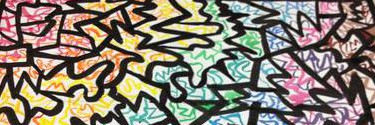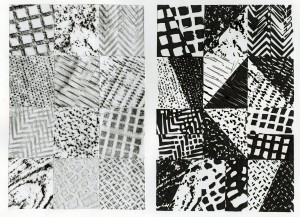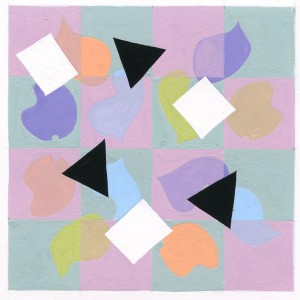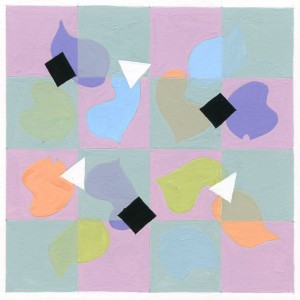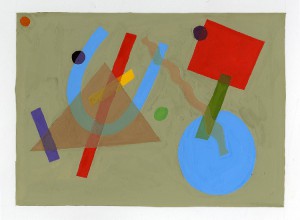In this project, I was to collect a set of 12 different textures to be transferred for a 50/50 figure ground. The original set would be transferred over to the right and a composition would be created using the 50/50 figure ground. For this, each texture was to be divided in half, where one half would resemble the original and the other would resemble a negative of the original.
This assignment was fairly difficult in finding the appropriate textures and mapping the 50/50 figure ground. Texture were found in everyday items and surroundings such as shoes, trees, floors, etc. They were obtained by rubbing a black crayon over a white blank paper against the textures. To transfer the textures to the right I traced them onto tracing paper on both sides so the transfer won’t flip the textures. Mapping the 50/50 background was difficult because it also had to be visually appealing. It included deciding where to split the texture in half, horizontally, vertically, or diagonally and on which slope. The actual execution of the final piece, the negatives, wasn’t all that difficult.
